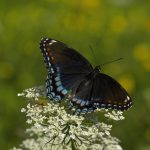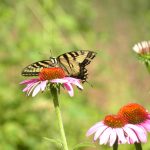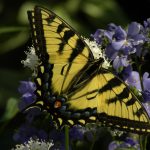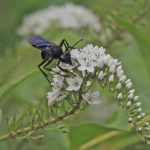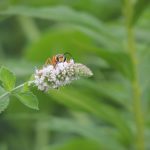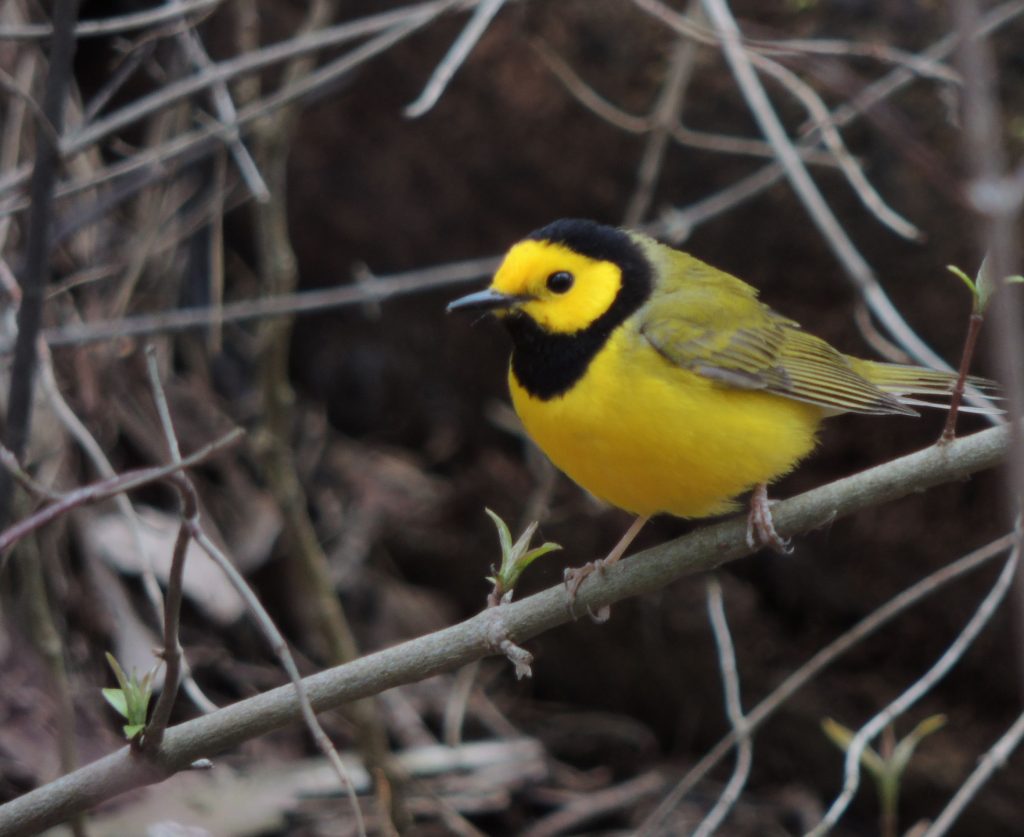August 6 2017. Urquhart Butterfly Garden, Dundas On. I’ve spent a week or two mulling over whether a Hummingbird Clearwing has a place as a Bird of the Day. Technically no because it’s a moth but Hummingbird Clearwings look and behave a bit like a bird, superficially anyway.
These evenly warm summer days bring out the pollinators like those above, insects mostly: butterflies, all sorts of gentle (non stinging) bees and wasps, and moths. All you need is a block of idle time spent in an unkempt expanse of knee-deep flowering plants to see them, the sort of dreamy, summer-light place that might inspire a Victorian poet to start scribbling or painter to unpack her watercolours. In this part of the world you have a reasonable chance of seeing a Hummingbird Clearwing hovering at a flower’s doorstep. They use their almost one-inch long proboscis to draw nectar from deep within tubular flowers.
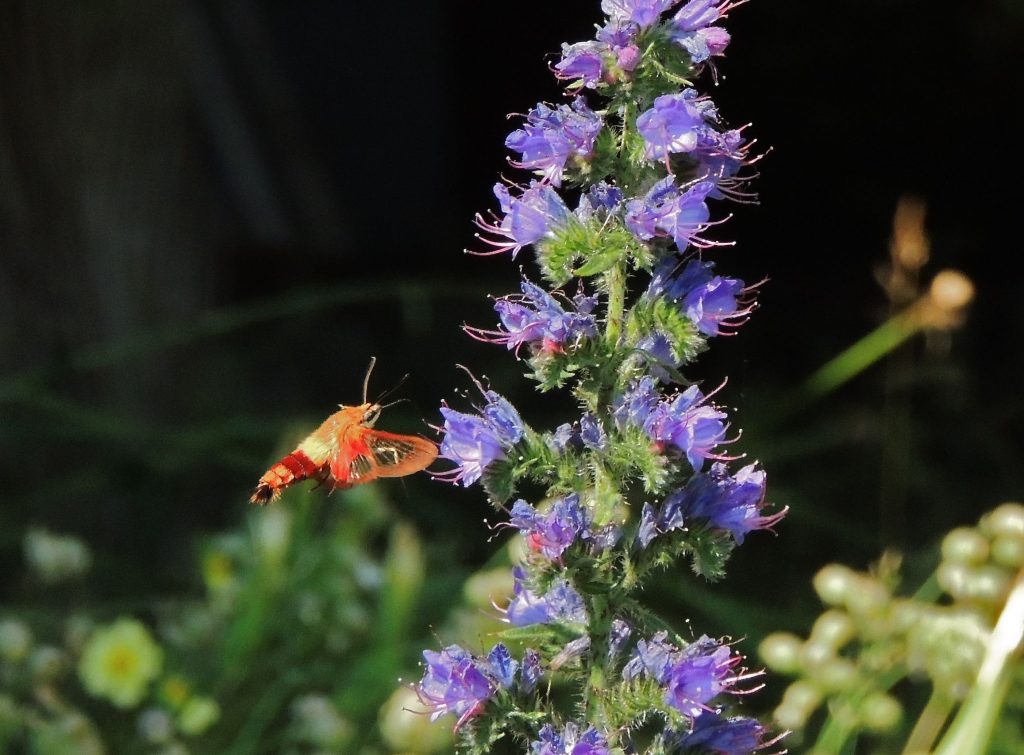
Hummingbird Clearwings are members of a family of moths called Sphinx or Hawk Moths and don’t behave anything like the way we expect moths to.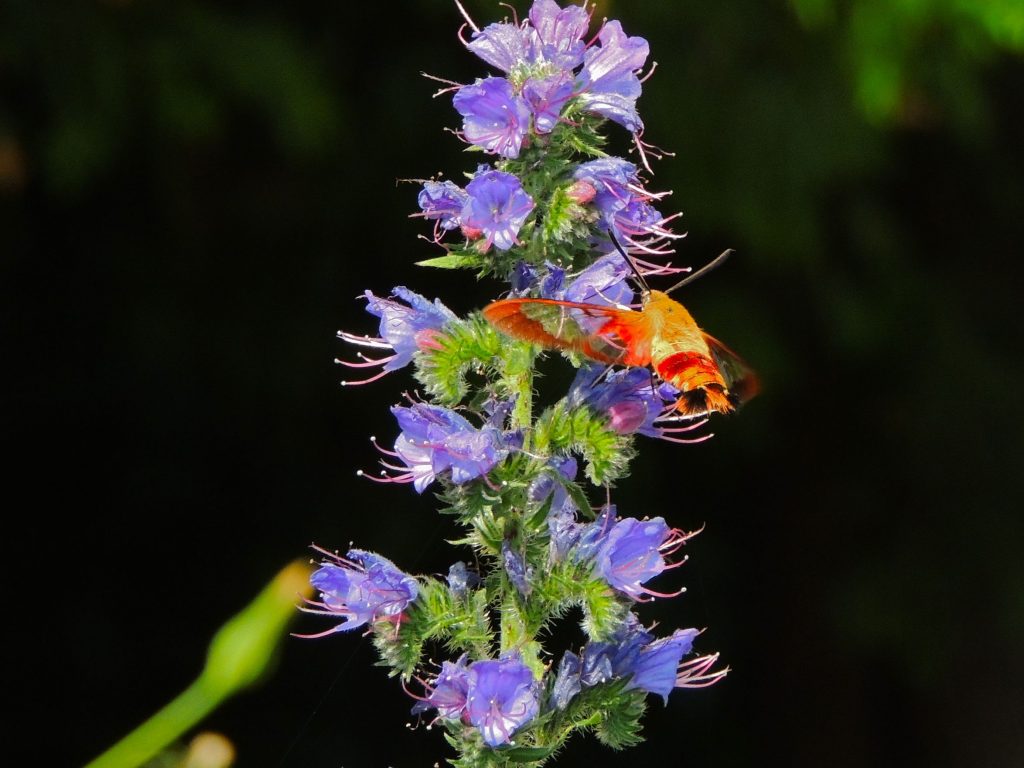
In expanding my knowledge of moths I found that unlike butterflies, which are generally considered inoffensive and charming, many moth species engage in some pretty undesirable behaviour at one stage or another of their life cycle. If there’s a worm that does destructive things in gardens and orchards, there’s a chance it’s the larva (caterpillar) of a moth. Just take a look at the index of The Peterson Field Guide to Moths and you’ll find some pretty anti-social sounding creatures: Cherry Shoot Borer, Sorghum Webworm, Ironweed Root Moth, Red-necked Peanut Worm and Iris Borer to name a few.
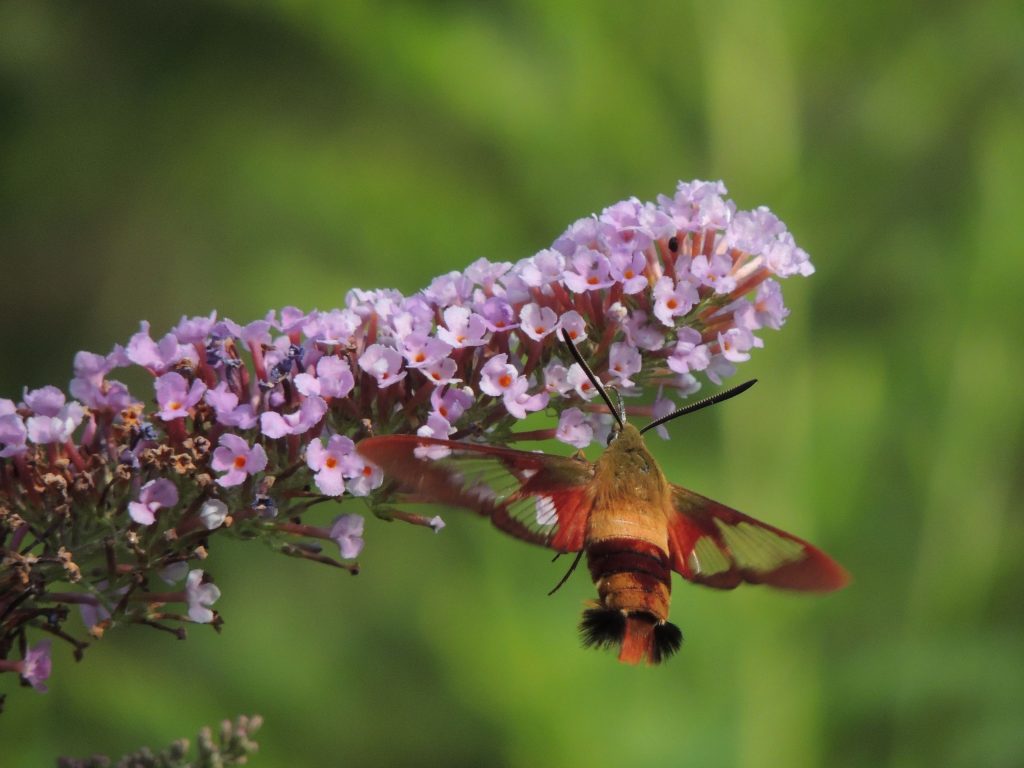
I don’t know what the Hummingbird Clearwing does as a larva, whether it’s destructive to anything that mankind values. But as an imago (the mature stage of any insect’s four-stage life) it is an arresting sight. As I took the photo above, a woman standing beside me was certain it was a real hummingbird. It’s not…except as an honorary Bird of the Day.
